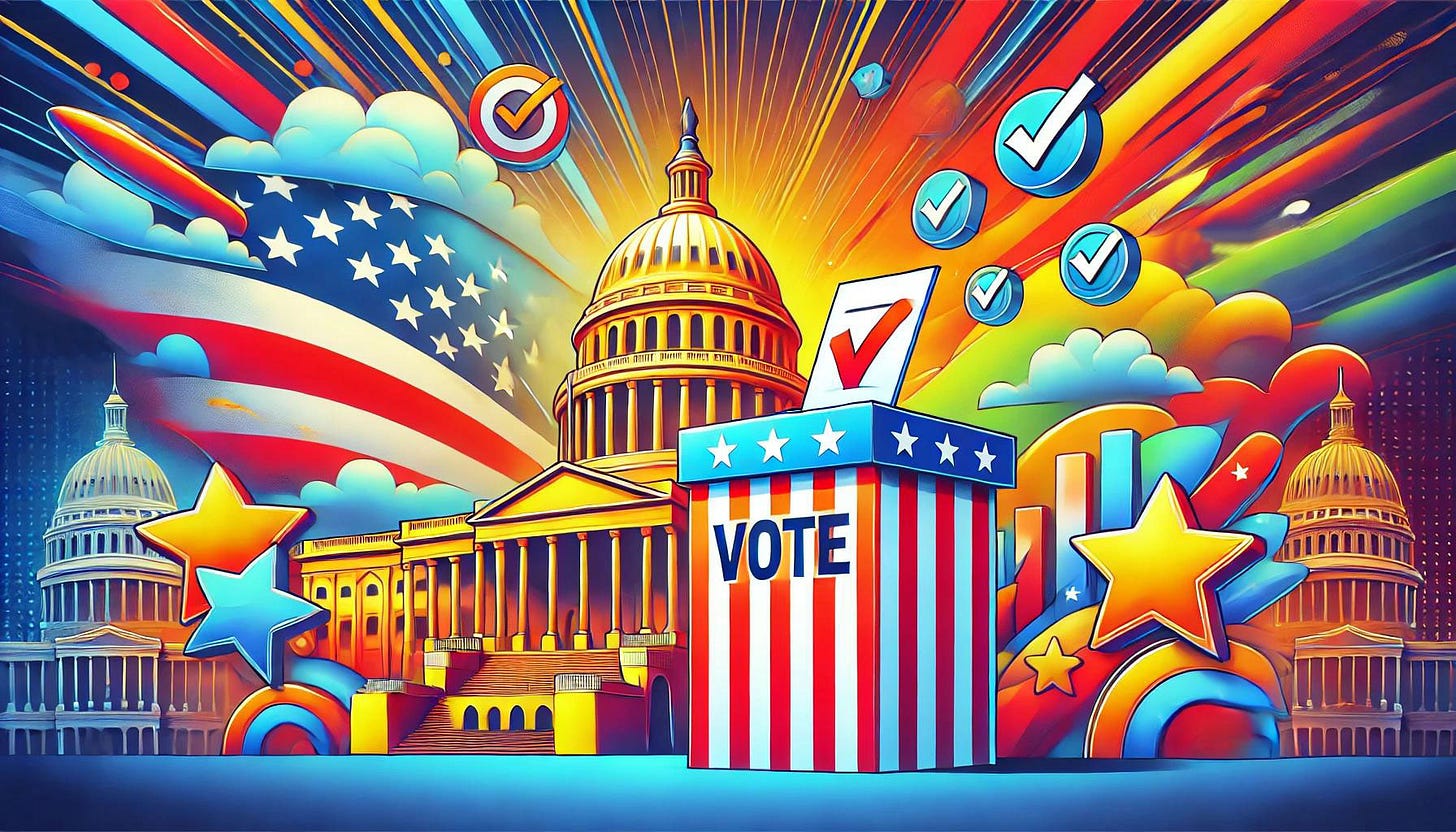Project 1980 and Project 2025: A Blueprint for Conservative Policy and the Power of Your Vote in November
How the Past and Future Conservative Policy Agendas Shape the Middle Class and Why Your Vote in the Upcoming Elections Matters More Than Ever
As the November presidential and general elections approach, voters face choices that will shape the future of the United States for years to come.
The Heritage Foundation, a conservative think tank with a history of guiding policy through its influential projects, is among the critical forces influencing these decisions.
From Project 1980s to the new Project 2025, the Heritage Foundation has sought to influence federal governance in ways that have had lasting effects on the American middle class and the broader political landscape.
Understanding these initiatives can shed light on how voting in November could impact the country's future direction.
The Heritage Foundation's Project 1980: A Conservative Revolution
In 1980, as Ronald Reagan prepared to take office, the Heritage Foundation introduced the Mandate for Leadership, a detailed policy blueprint for the new administration.
This document, created as part of the Project 1980s, outlined key conservative priorities, including reducing the size of the federal government, lowering taxes, deregulating industries, and strengthening national defense.
The Mandate for Leadership was not just a wish list; it profoundly impacted Reagan's policies and the country's direction.
Many middle-class Americans benefited from the economic growth that followed, but the project also widened income inequality and reduced the power of social programs that supported working families.
The success of the Mandate for Leadership solidified the Heritage Foundation's role in shaping conservative policy, and it set the stage for future efforts to influence governance, including today’s Project 2025.
What Is Project 2025?
Fast forward to the present, and the Heritage Foundation is once again preparing for the possibility of a conservative resurgence in the White House with Project 2025.
Much like its predecessor, this initiative aims to provide a comprehensive set of policy recommendations for an incoming conservative administration.
While Project 1980s focused heavily on economic and defense policies, Project 2025 expanded its scope to include current conservative priorities such as targeting immigrants, combating progressive social policies, restructuring the economy to benefit the wealthy elite, and limiting women’s rights.
One thing is certain: Project 2025 will seek to reshape the federal government in ways that align with conservative ideals.
This means potential changes to taxation for working-class Americans, healthcare, environmental policies, and more—all of which will profoundly affect the middle class. The question for voters this November is whether this is the direction they want the country to move in.
How the Policies Could Affect the Middle Class
Both Project 1980s and Project 2025 share the goal of reducing government intervention in the economy, but this approach has always had a detrimental impact on the middle class.
Under Reagan, tax cuts and deregulation widened the gap between the wealthy and everyone else. As a result, while some middle-class families thrived, many struggled with reduced access to social services and growing economic insecurity.
Like what you’re reading? Chip in and keep the words flowing—paid subscribers get the warm fuzzies (and bragging rights).
With Project 2025, we can expect similar themes. Proposed tax cuts for the rich and increased import tariffs would likely devastate workers. Moreover, depending on how labor regulations are altered, middle-class voters could see changes in job security and wages.
The policies outlined in Project 2025 will burden the middle class. The Heritage Foundation’s history of emphasizing the reduction of government involvement in key social safety nets is something voters need to consider carefully in the upcoming election.
The Importance of Voting in the November Elections
Ultimately, the policies of Project 2025, like those of the Mandate for Leadership, will not be enacted in a vacuum.
They will depend on who occupies the White House and controls Congress after November. This makes it crucial for voters to understand the stakes and participate fully in the electoral process.
Your vote in November will help determine the direction of critical issues affecting the middle class, such as taxes, healthcare, education, and workers' and women’s rights.
If you’re concerned about the reduction of social programs, the elimination of women’s control over their own bodies, and the widening income gap, you likely view these policies as potentially harmful to working families.
The importance of voting cannot be overstated.
The Heritage Foundation’s influence on policy, whether through Project 1980s or Project 2025, demonstrates how elections have long-term consequences for the direction of the country.
Voting gives you the power to decide whether the nation should continue on its current path or move backward to an earlier time.
Conclusion: Why Your Vote Matters
As Project 2025 gears up to shape the future of conservative policy, it’s important to reflect on the impact of past initiatives like Project 1980s and the Mandate for Leadership.
These policy blueprints helped guide the Reagan administration and reshape the federal government in ways that are still felt today. The policies promoted by Project 2025 will have similarly lasting effects on the middle class, immigrants, and women.
In the upcoming November elections, your vote will help determine whether the policies proposed in Project 2025 come to fruition or whether the country moves in a different direction. This election is not just about choosing a president—it’s about shaping the future of the country. Make sure your voice is heard.



